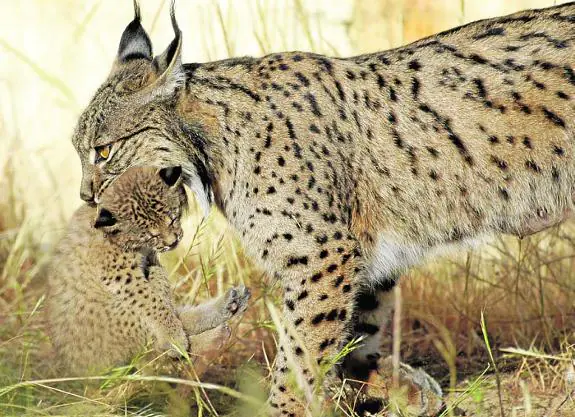

Sections
Highlight

CECILIA CUERDO
Thursday, 29 October 2020, 19:17
Compartir
The Iberian lynx is slowly coming out of the ICU in which it has been for nearly two decades. The efforts of ecologists and the public authorities to rescue this species, which was in danger of extinction, are continuing to bear fruit: the lynx population has increased ten-fold since 2002, and 894 now roam freely on the Iberian peninsula.
After the first phase, which increased the number of individual lynxes, the conservation programmes are now focusing on connecting the different colonies to create a self-sufficient population. This will also improve the genetic variability of the species and help to make it stronger.
This has been a spectacular leap since ecologists raised the alarm about what appeared to be the inevitable disappearance of lynxes at the end of the 1990s. Since then, and thanks to the European Union's Life programmes in which administrations and conservation groups participate, it has been a race with numerous challenges. The first was to stop the decline of the species; then to begin breeding in captivity and reintroducing the cats into the most suitable environments; and finally to settle the lynx population in its historical territories.
The Iberian lynx project is the most highly praised conservationist programme of all and is the example to be followed for other species in danger of extinction. At the moment 583 lynxes are living freely, 476 (81.6%) in Spain and the other 107 in Portugal. In addition, 311 kittens were born in 2019. Most of the lynxes on the Iberian peninsula live in one of the four stable and consolidated communities in Andalucía: Andújar-Cardeña (145), the Guarrizas river area in Jaén (71), Doñana-Aljarafe (69) and Guadalmellato in Cordoba (46), and a further three are loose in different parts of the region. There are also 84 in Castilla-La Mancha (84) and 58 in Extremadura.
One of the measures for evaluating success is the amount of reproducing females.
The Unión Internacional para la Conservación de la Naturaleza (UICN) says that, for a species to move out of the 'in danger of extinction' classification and into merely being 'vulnerable', 125 reproducing females are needed for at least five years. This target was reached two years ago, and at the moment there are 188 reproducing females on the peninsula, 120 of them in Andalucía.
However, enviromentalists aren't patting themselves on the back yet. "We're still only half way. It will take at least 20 years before we can say the species is recovered and in normal conditions," says Ramón Pérez de Ayala, the World Wildlife Fund coordinator of large carnivores.
Avoiding a limited gene pool
He explains that in the next five years the Life programme will focus on consolidating these populations and the settlements in which they are located, and connecting these territories. It is a fundamental task because it involves improving the genetic diversity of the lynxes and preventing the limited gene pool that debilitates any species and makes it less resistant to a change or threat from the ecosystem.
"The best way to connect them naturally is to create small communities in intermediate areas to shorten the distances, but it isn't easy," he says. The habitat has to be suitable; at least 10,000 hectares with sufficient rabbits, and where the closest human communities do not pose an excessive risk in terms of hunting or road accidents - the two main causes of death. As the numbers reintroduced are small, any incident can affect the balance of the population.
"We have previous experience and know what we have to do, now we just have to think about the best way to do it," says Pérez de Ayala.
Publicidad
Publicidad
Publicidad
Publicidad
Reporta un error en esta noticia
Necesitas ser suscriptor para poder votar.